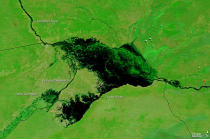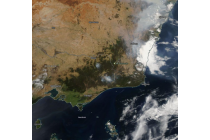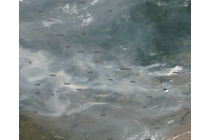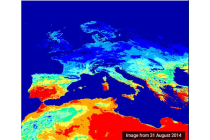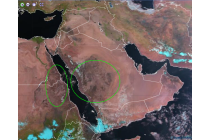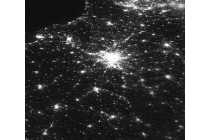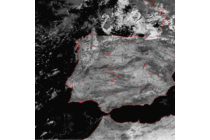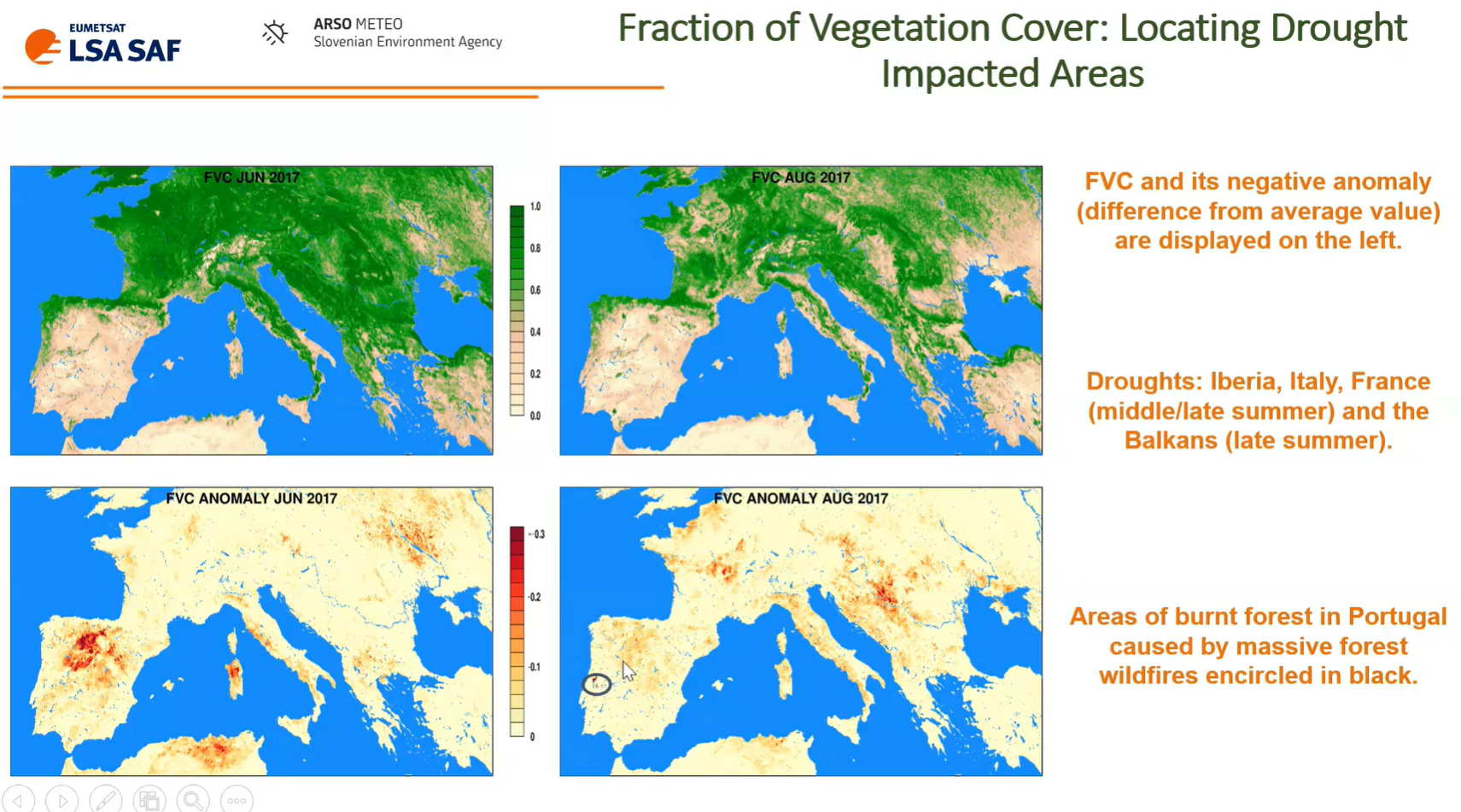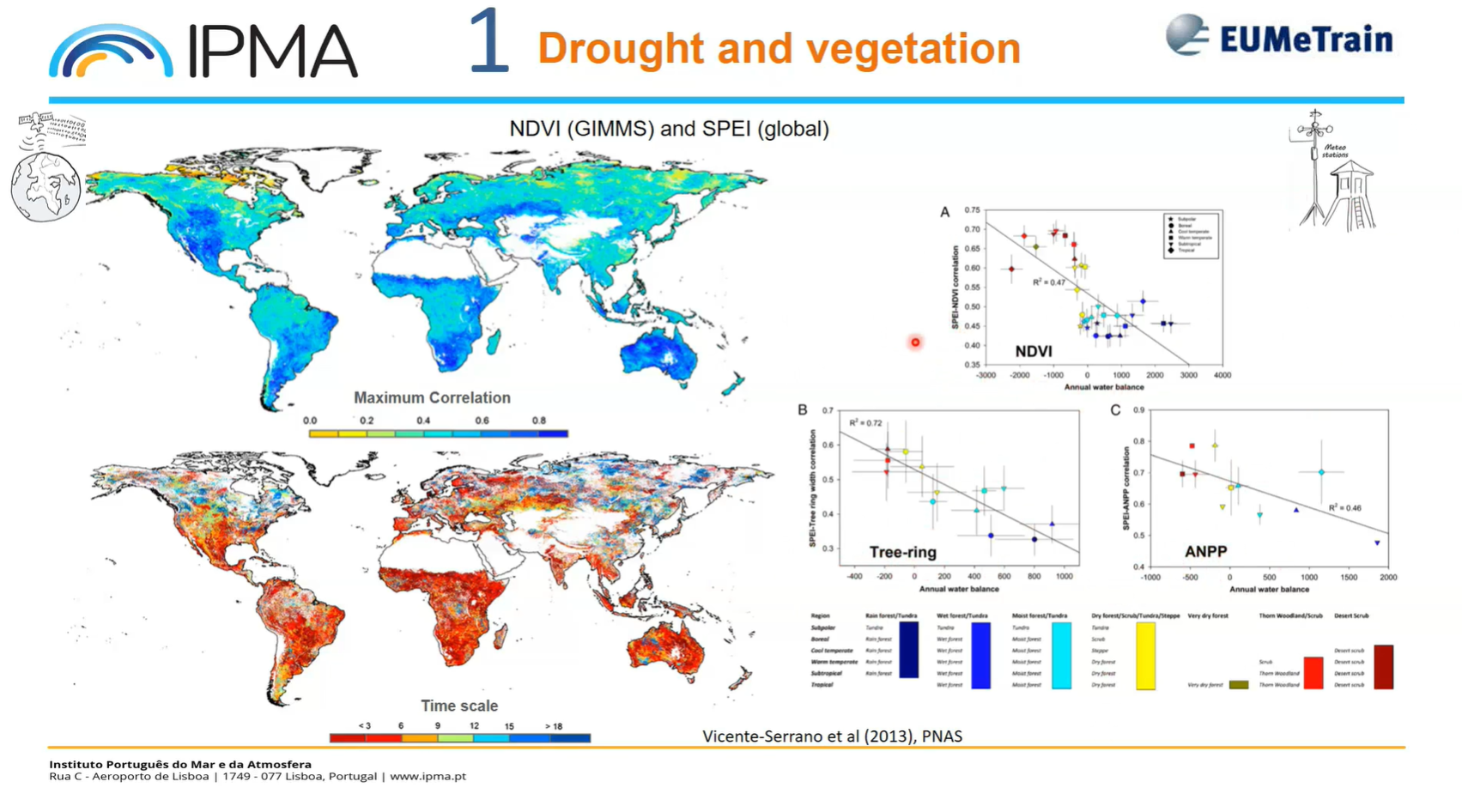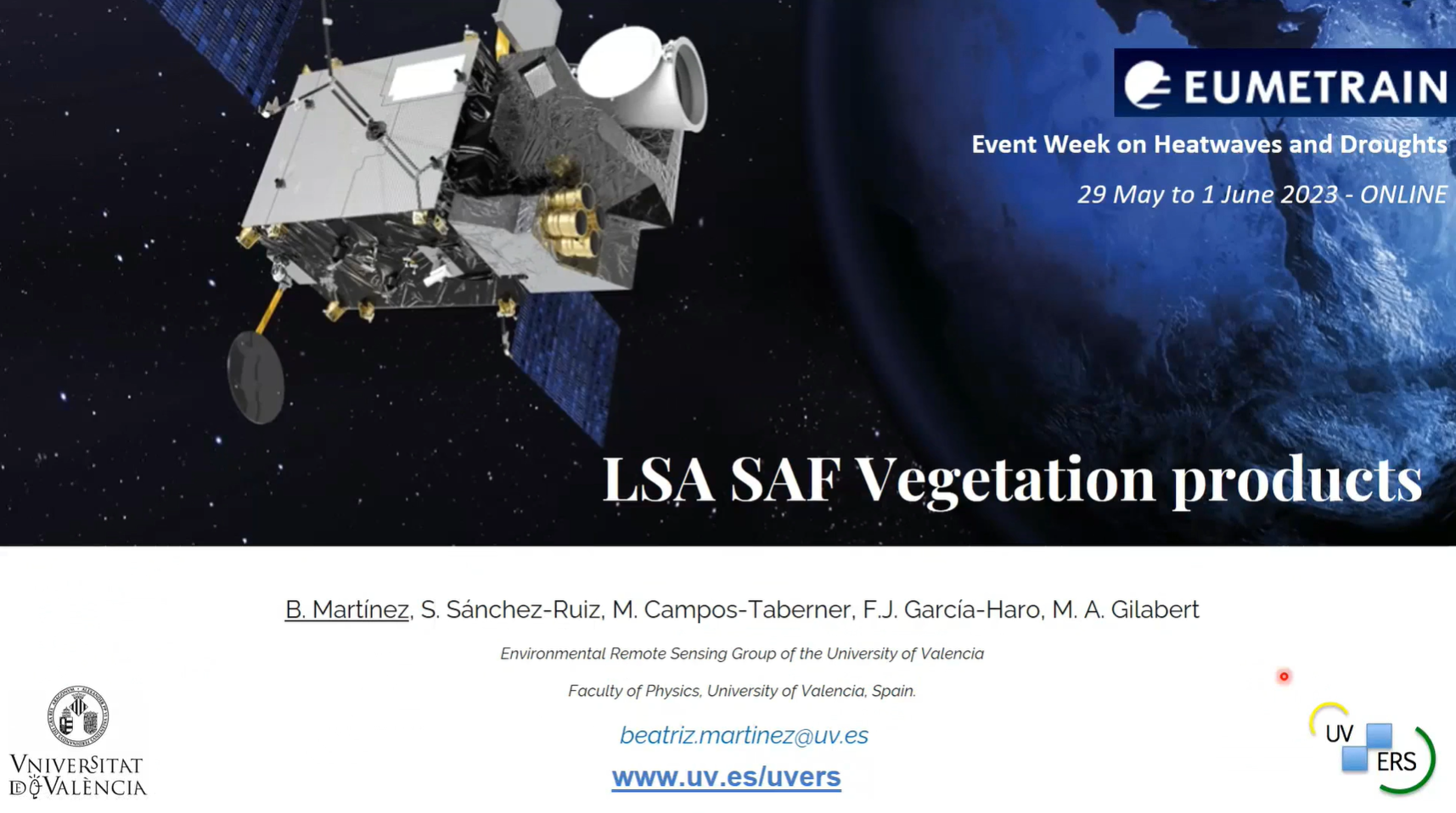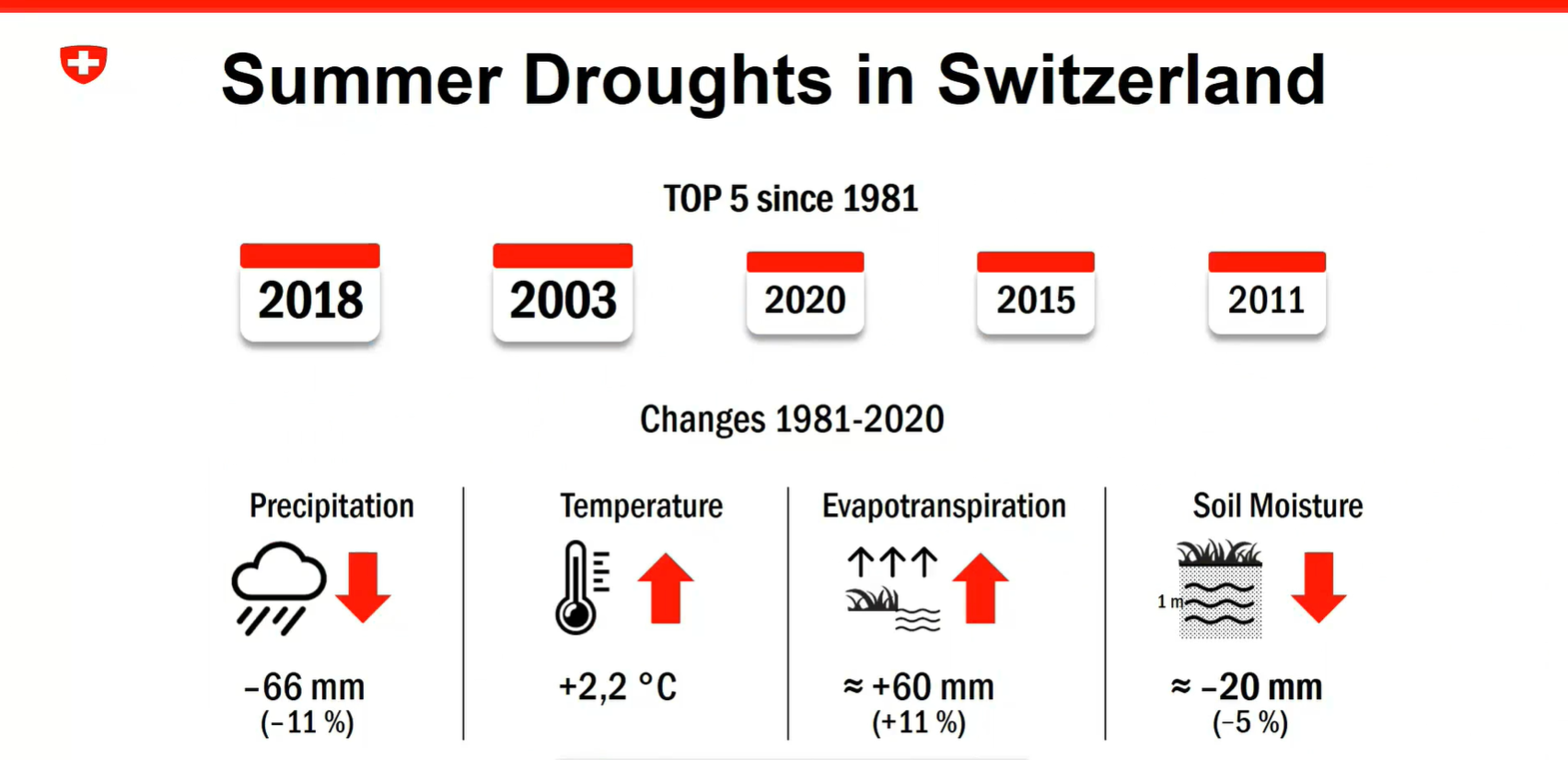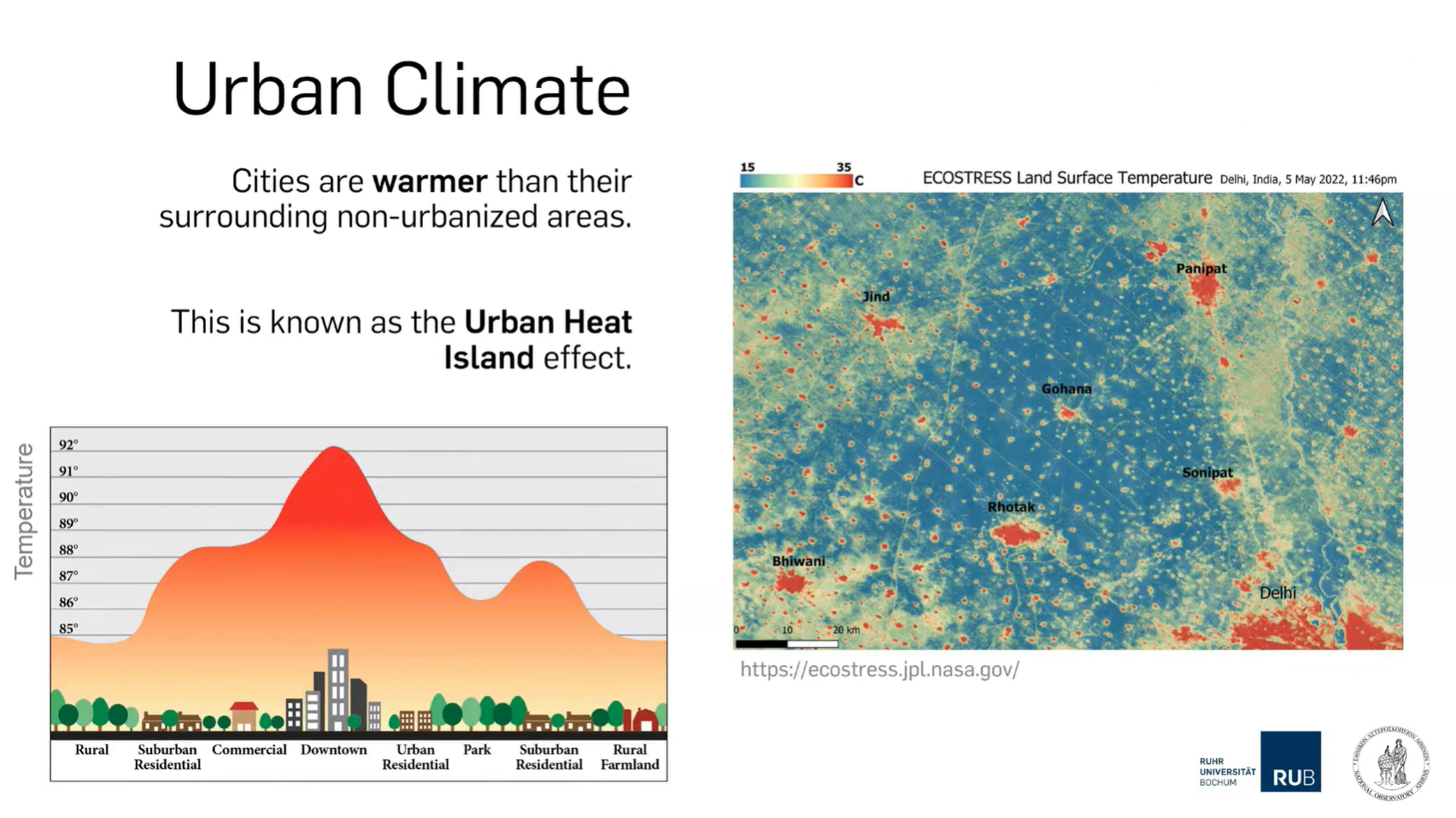Satellite skills and knowledge for operational meteorologist
Listed here are other resources related to Satellite skills and knowledge for operational meteorologist tag:
Note: click on an image to open the Resource
Learn how to recognize areas of flooding.
In this module you will be able to identify geographical features and surface characteristics and conditions through images and satellite products. Although surface features are not the main purpose of meteorological forecasting, being able to identify and distinguish them from atmospheric features can be useful.
To access the resource click here.
Learn how to recognize burnt areas.
In this module you will be able to identify geographical features and surface characteristics and conditions through images and satellite products. Although surface features are not the main purpose of meteorological forecasting, being able to identify and distinguish them from atmospheric features can be useful.
To access the resource click here.
Learn how to identify hotspots.
In this module you will be able to identify geographical features and surface characteristics and conditions through images and satellite products. Although surface features are not the main purpose of meteorological forecasting, being able to identify and distinguish them from atmospheric features can be useful.
To access the resource click here.
Learn how to identify areas of drought and heatwaves.
In this module you will be able to identify geographical features and surface characteristics and conditions through images and satellite products. Although surface features are not the main purpose of meteorological forecasting, being able to identify and distinguish them from atmospheric features can be useful.
To access the resource click here.
Learn how to identify vegetation free areas as well as how to identify different types of desert surface such as sand or desert pavement.
In this module you will be able to identify geographical features and surface characteristics and conditions through images and satellite products. Although surface features are not the main purpose of meteorological forecasting, being able to identify and distinguish them from atmospheric features can be useful.
To access the resource click here.
Learn how to distinguish between natural and human modified areas.
In this module you will be able to identify geographical features and surface characteristics and conditions through images and satellite products. Although surface features are not the main purpose of meteorological forecasting, being able to identify and distinguish them from atmospheric features can be useful.
To access the resource click here.
Learn how to discriminate between land and areas of water like oceans, seas, lakes, rivers or inlets.
In this module you will be able to identify geographical features and surface characteristics and conditions through images and satellite products. Although surface features are not the main purpose of meteorological forecasting, being able to identify and distinguish them from atmospheric features can be useful.
To access the resource click here.
Bostjan Muri talks about using LSA SAF data and vegetation anomalies for drought monitoring.
In this presentation, we explore numerous real world applications of the use of LSA SAF data. Our focus is identifying heatwaves and droughts based on satellite data. Vegetation anomalies can be particularly helpful for drought monitoring. These show cases are selected in order to highlight the benefits of specific applications using LSA SAF data and its added-value when compared with other existing sources of observations (either satellite or meteorological stations) as well as model output.
Célia Gouveia presents about heatwave and drought impacts on crops and vegetation.
The frequency and intensity of extreme hot and dry events have increased worldwide, particularly over the past couple of decades. The interaction between co-occurring drought and hot conditions is often particularly damaging to vegetation and crop's health and may cause crop failure. This lecture will provide insights on the impacts of compounded and separated dry and hot extremes on vegetation activity, and crop production and yield. Examples of the detection, monitoring and evaluation of such impacts using remote sensing products will be shown.
Beatriz Martinez shows how climate data records analysis can be used to monitor drought affected areas.
The scientific community requires consistent long-term data records with well-characterized uncertainty and suitable for modelling terrestrial ecosystems changes as consequence of current climate impact at global scales. The vegetation climate data records (CDRs) of FAPAR (LSA-426) and FVC (LSA-422) are freely available within the EUMESAT LSA SAF (http://lsa-saf.eumetsat.int). These CDRs offer more than fifteen years (2005- present) of homogeneous and continuous 10-day time series for climate and environmental applications. The main goal of this lecture is to present a few examples CDRs analysis to monitor and characterize areas mainly affected by severe drought events. Moreover, the potential in the assessment of ecosystem response to rainfall deficit events is also presented using the last operational product included in the VEGA portfolio, the 10-day gross primary production (GPP; MGPP LSA-411). The robustness of this product is evaluated at both site and regional scales across the MSG disk using eddy covariance (EC) GPP measurements and Earth Observing (EO)-based GPP products, respectively, over a short period of three years.
Anke Duguay-Tetzlaff and Vincent Humphrey present about the recent Swiss drought monitoring project and use of EUMETSAT satellite data for drought monitoring.
The Swiss government has started a drought monitoring project in 2023. The goal is to set an operational drought monitoring and warning system in the upcoming years. In a pre-study we have analyzed the potential of EUMETSAT satellite data for climatological drought monitoring in Switzerland. We will present possibilities and shortcomings of the different analyzed soil moisture, land surface temperature and evaporation data and provide an outlook on how we plan to integrate EUMETSAT data in the system.
Panagiotis Sismanidis provides insight into urban heat islands including its drivers and impacts.
Cities are generally warmer than their surroundings. This phenomenon is known as the Urban Heat Island (UHI) and is one of the clearest examples of human-induced climate modification. UHIs increase the cooling energy demand, aggravate the feeling of thermal discomfort, and influence air quality. In this talk we will discuss the drivers and impacts of UHIs and showcase how to characterize the urban landscape in Local Climate Zones. We will also discuss the discrepancies between remotely-sensed land surface temperatures (LST) and near-surface air temperatures when studying the urban climate.

